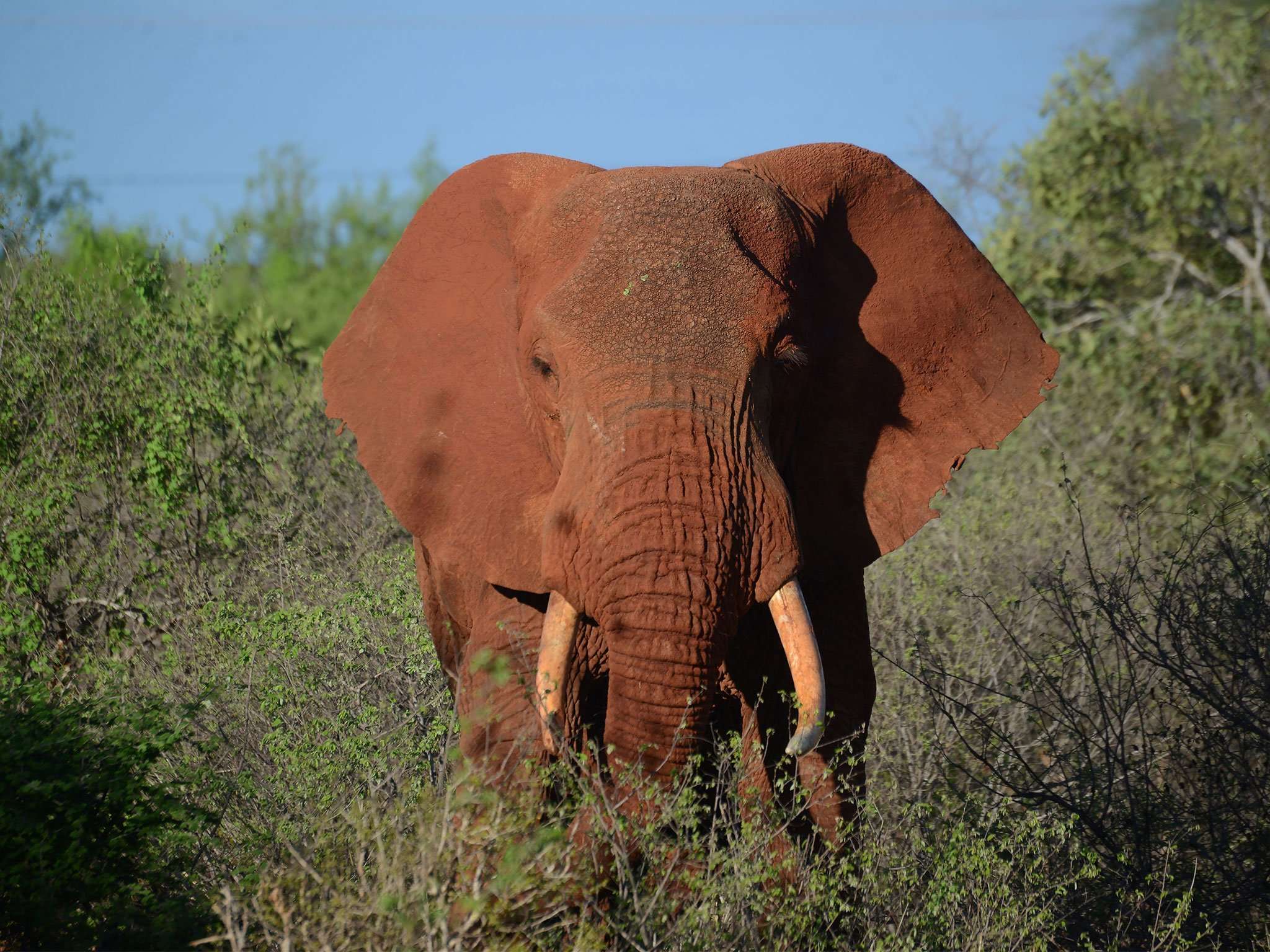Three poachers have been killed and two others injured following a gun battle with rangers at a Kenyan wildlife reserve.
Wildlife troopers had been on a routine patrol at Mount Elgon National Park, which straddles the border of Kenya and Uganda, when they encountered a gang of five men last Thursday.
The rangers, from the Kenya Wildlife Service (KWS) exchanged fire with the poachers, who were reportedly armed with AK-47 rifles.
Troopers killed three of the group during the shoot-out, while two more suspects were able to escape with minor injuries.
Equipment associated with poaching was later found at the scene, the wildlife service said.
“KWS officers were on patrol inside the park when they spotted the poachers,” Trans Nzoia county police commander Samson ole Kine told Nairobi-based newspaper The Standard.
“A fierce shoot-out ensued and three of the poachers were gunned down while two others escaped. AK-47 rifles were recovered.”
Poaching has declined sharply in Kenya since reaching a peak in 2012, but issues around the illegal hunting activity still persist.
Last year, 69 elephants were killed for their ivory in the country, while a further nine rhinos were also slaughtered.
Earlier this month, three rhinos were found dead with their horns missing in Meru National Park's Rhino Sanctuary, in what Kenya's tourism ministry said was an act of poaching.
A short timeline of elephant poaching 10 show all A short timeline of elephant poaching 1/10 1880s.jpg An estimated 26 million elephants roam the African continent when the first Europeans began building forts on Africa’s uninhabited islands. Robert H. Milligan, New York Public Library 2/10 1910.jpg At the turn of the century, European empires stretch across Africa. The elephant population halves within a century to around ten million. Ivory is in vogue in Europe and America. Combs, piano keys, pool table balls and ornaments fashioned from elephant tusks are in high demand. Creative commons 3/10 1979.jpg In the 20th century, elephant populations dwindle to 1.3 million because of growing demand from the West. Surreal Name Given, Flickr 4/10 1980s.jpg Throughout the 1980s, 250 elephants are killed every day. By the end of the decade, only 600,000 elephants remain in Africa. Kenya’s population drops 89% from 167,000 to a mere 19,000. The species is on the verge of extinction in many parts of Africa. Scotch Macaskill 5/10 actual elephant forensic 1989.jpg CITES bans all commercial ivory trade; the ban comes into force in 1990. Kenya destroys its entire ivory stockpile in a gesture against the ivory trade. Space for Giants 6/10 1990s.jpg After the ban, elephant populations began to recover. Within the next ten years, Kenya’s population rises from 55,000 to over 125,000. The Kenyan population also grows to more than 30,000 by 2007 from the historic low of 16,000. Space for Giants 7/10 1999.jpg Under mounting pressure from African leaders, Cites allows a ‘one-off’ sale of stockpiled ivory. Japan buys 55 tons of ivory from Zimbabwe, Namibia and Zimbabwe for £3 million. Vidhi Doshi 8/10 `Ivory elephants 2008.jpeg Cites grants Japan and China permission to import elephant ivory from government stockpiles; 102 tonnes of stockpiled ivory from Botswana, South Africa, Namibia and Zimbabwe were sold to Japan and China for £9.3 million. Space for Giants 9/10 elephantfence 2009.jpg There is a huge spike in the number of large ivory seizures, with 14 seizures totalling 23,235 tons. Space for Giants 10/10 Elephant dust 2013(1).jpeg Approximately 450,000 elephants remain in Africa. There have been 18 large-scale seizures of illegal ivory, 41,674 kg in total, the highest annual since records began. It is highly likely just a small fraction of the illegal ivory through the system is actually detected. Space for Giants
Three months earlier, a prominent American investigator of the illegal ivory and rhino horn trade was found dead in his Nairobi home with a stab wound in his neck.
Police county commissioner, Erastus Mbui, said authorities had stepped up security and surveillance operations along the Kenya-Uganda border to deter poachers.
“More officers have been deployed to conduct regular security patrols at the park and ensure wildlife is protected from the poachers,” he said.
“We urge communities around the park to report people they suspect to be on a poaching mission.”

TooShiftyForYou on June 7th, 2018 at 17:31 UTC »
The rangers, from the Kenya Wildlife Service (KWS) exchanged fire with the poachers, who were reportedly armed with AK-47 rifles. Troopers killed three of the group during the shoot-out, while two more suspects were able to escape with minor injuries.
The classic noble hunting weapon, the AK-47. Good on these rangers for ending this.
JPWRana on June 7th, 2018 at 16:58 UTC »
I believe I read somewhere years ago that in India, it was legal to kill poachers due to decline of tigers. Once that became law, poaching dropped by a lot.
trappedIL10 on June 7th, 2018 at 16:23 UTC »
This should be a warning to fellow poachers to stop killing elephants.